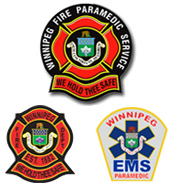Carbon Monoxide
The Silent Killer
The "silent killer" is what carbon monoxide gas is often called. Carbon monoxide (CO) is a colourless and odourless gas that is released when heating oil, gasoline, diesel, propane, kerosene, natural gas or wood burns without enough oxygen. Dangerous, even fatal, accumulations of CO can result from a faulty appliance, clogged chimney, inadequate venting, or a build-up of engine exhaust.
The "silent killer" is what carbon monoxide gas is often called. Carbon monoxide (CO) is a colourless and odourless gas that is released when heating oil, gasoline, diesel, propane, kerosene, natural gas or wood burns without enough oxygen. Dangerous, even fatal, accumulations of CO can result from a faulty appliance, clogged chimney, inadequate venting, or a build-up of engine exhaust.
How many CO detectors should I have in my home?
The Consumer Products Safety Commission recommends at least one CO detector in your home. If you have a multi-level home, it is generally recommended that you install a CO detector on each level of your home.
Where should a CO detector be placed in my home?
The Consumer Products Safety Commission recommends at least one CO detector near the sleeping area. If there were an alarm situation, you would be able to hear it even when you are asleep. A second detector located near the home's heating source adds an extra measure of safety. The CO detector can be placed up high (on the ceiling) or down low (near the floor). Because CO mixes evenly with the air, either location will accurately detect it.
My CO Alarm makes a strange noise, but it is not a full alarm. What does that mean?
If your CO Alarm is making a strange noise, check your manufacturer's operating information. It is likely an indication that the sensor is malfunctioning. In this case, your CO Alarm should be replaced.
If your CO Alarm alarms you MUST REACT. Do not ignore your alarm. All persons should leave the home and call 911. The WFPS will attend, address anyone's medical needs and test the premises for the presence of Carbon Monoxide. In the event CO is present a Manitoba Hydro gas appliance technician will be summoned and the home ventilated as required.
How often should a CO detector be replaced?
The life of a CO detector sensor varies; the newer models can be good for up to seven years. Check your manufacturer's operating instructions for more specific information to help you determine if your CO detector should be replaced.
If the CO detector I have or have purchased is not one of the certified models, does that mean it is unreliable?
Most CO detectors on the market today are certified models. However, if you have an older model, contact your manufacturer for more information. Some manufacturers will provide a test kit to assist you to determine whether the CO detector is functioning appropriately.
What causes CO build-up in a home?
In extreme cases, air-tight homes or faulty equipment can produce CO. Some examples include:
- A build-up of engine exhaust from running a car in an attached garage
- Insufficient combustion air for wood-burning fireplaces
- Faulty or improperly maintained fuel-burning equipment
- Excessive weatherizing that blocks the air flow required for the safe and efficient operation of fuel-burning equipment
- Blocked chimney or air vents
What should I do if I suspect a CO problem in my home?
All persons should leave the home and call 911. The WFPS will attend, address anyone's medical needs and test the premises for the presence of Carbon Monoxide.
In the event CO is present a Manitoba Hydro gas appliance technician will be summoned and the home ventilated as required.
Related Link: Carbon Monoxide Safety
Last update:
December 17, 2018


